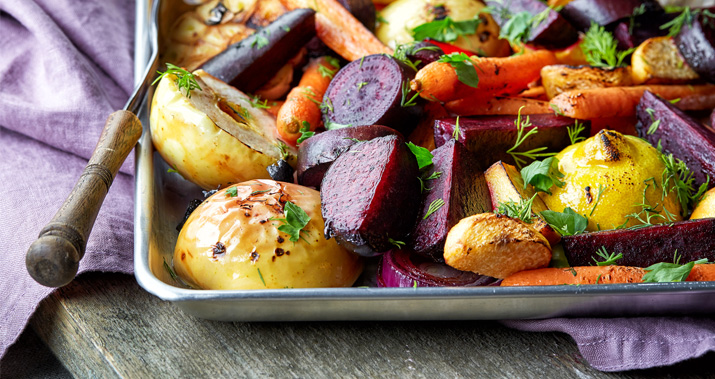
Eating fresh, seasonal food is one of the best ways to maintain a healthy, varied diet. This is easy to do in summer, when grocery stores and farmers’ markets are jam-packed with ripe fruits and vegetables. In winter, though, finding seasonal food can be a bit more of a challenge. Fortunately, there are a number of foods that are in season during the colder months. Considering trying some of these healthy additions to your diet, and explore the flavors that winter has to offer.
Warming Foods
If you’ve ever noticed your cravings changing from season to season, you’re not alone. Our bodies gravitate toward certain foods at different times of year, from light summer foods to heartier winter fare. This is more than a matter of taste — heavy foods can be difficult to digest in summer heat, and light foods aren’t helpful in cold weather.
A lot of the calories we take in are spent on maintaining our internal temperature. In hot weather, we sweat. In cold weather, we shiver, and those tiny muscle contractions can burn up a lot of energy. Foods that take a long time to digest, like those heavy in fats, proteins, and complex carbs, can actually help us keep our body temperature up. The trick is to balance the desire for heavier, heartier winter foods with the calories we need to thrive without throwing off our blood lipids or gaining excess weight.
Immune-Boosting Foods
Winter is known as cold and flu season, as we all tend to stay indoors, keep our windows closed, and share germs back and forth. Consuming foods that are high in beta carotene, like sweet potato and squash, vitamin D, like mushrooms, and vitamin C, like leafy greens, can help the immune system function at its best and keep illness at bay. While a good diet won’t guarantee that you won’t get sick, it’s the best way to give your immune system a fighting chance.
The Healthiest Seasonal Winter Foods
Many of winter’s best offerings can be both warming and immune boosting. Consider:
- Beets – Low in calories, and high in folate, vitamin C, fiber, and compounds that may help lower blood pressure. Steam, roast, or gently sauté to keep their nutrients intact.
- Brussels sprouts – Packed with vitamin K, fiber, and vitamin C, they also contain 3g of protein, 6% of the RDA of iron, and 5% of magnesium per serving. Roast them to help bring out their nutty flavor.
- Carrots – A beta carotene powerhouse, carrots are also a good source of fiber, vitamin K1, and potassium.
- Chard – A great source of beta carotene, vitamin C, and vitamin K, chard also contains iron and magnesium. Try lightly sautéing in a little fresh orange juice.
- Kale – A very nutrient-dense vegetable, kale is high in vitamin C, vitamin K, and vitamin A, and contains potassium, magnesium, calcium, and iron.
- Leeks – A good source of vitamin A, C, and K, as well as iron and manganese. These mild-tasting alliums are an excellent addition to soups.
- Turnips – High in fiber, B vitamins, vitamin K, beta carotene, vitamin C, and vitamin E, and a source of iron, potassium, calcium, and magnesium. Try substituting turnips for potatoes in your favorite potato dishes.
- Winter squash – A good source of vitamin C, zinc, alpha and beta carotene, B vitamins, and fiber. Butternut squash can be made into a comforting, creamy soup, or even made into a healthy dessert.
Eating seasonally during winter can be more challenging than it is during summer, but it doesn’t have to be difficult. Be receptive to the unique flavors of winter vegetables, and experiment with incorporating them into your favorite warming winter recipes.